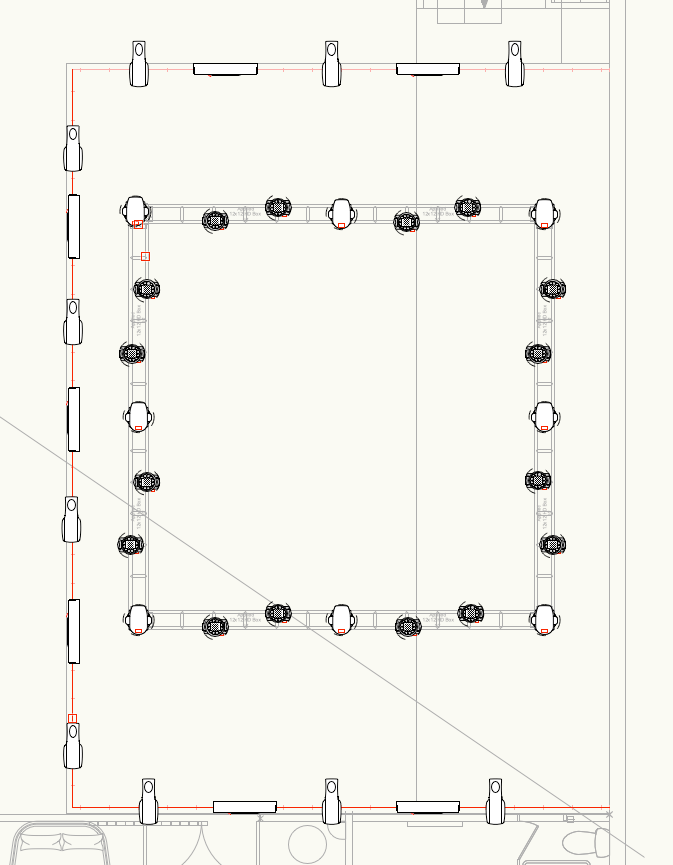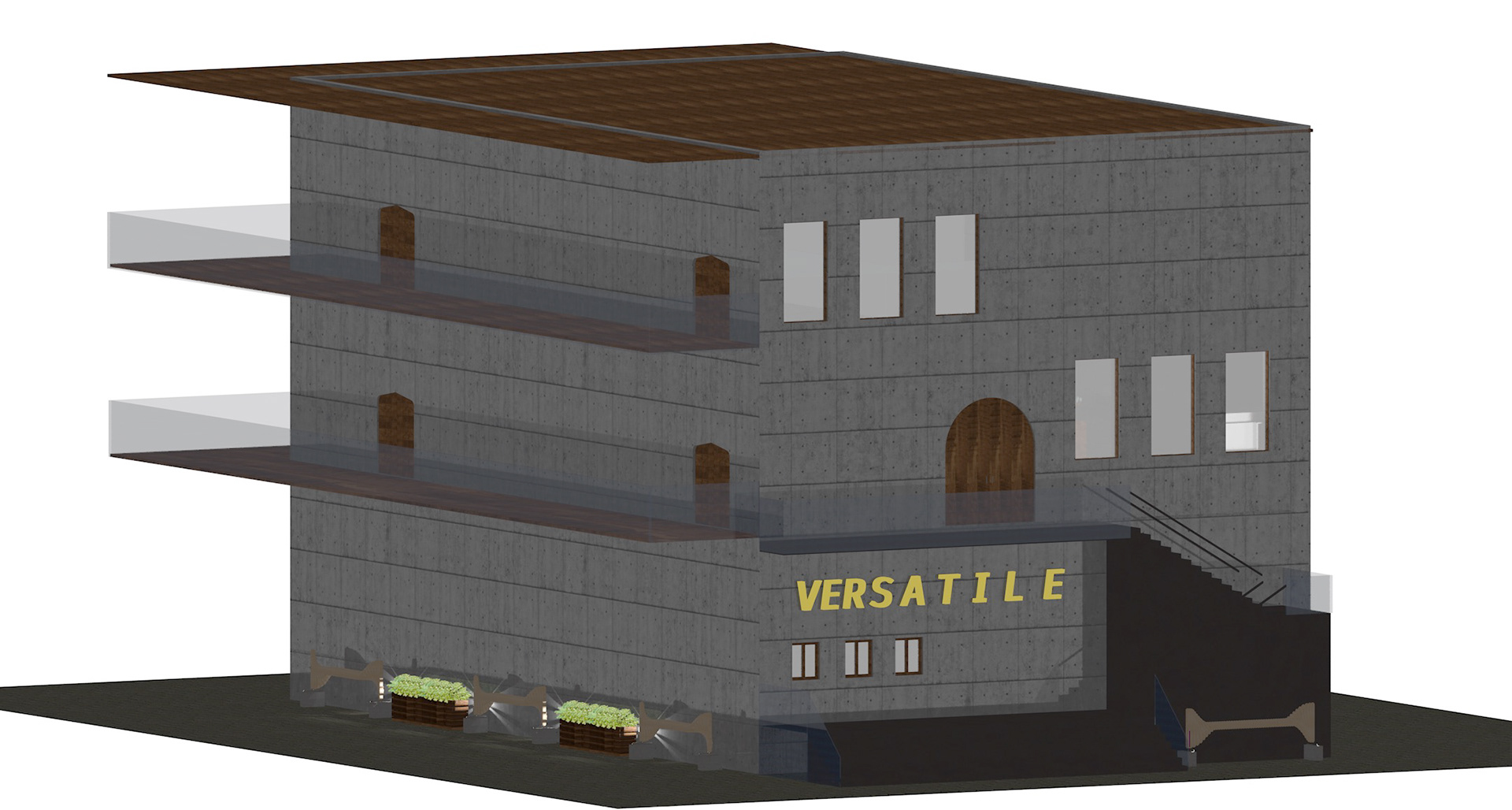
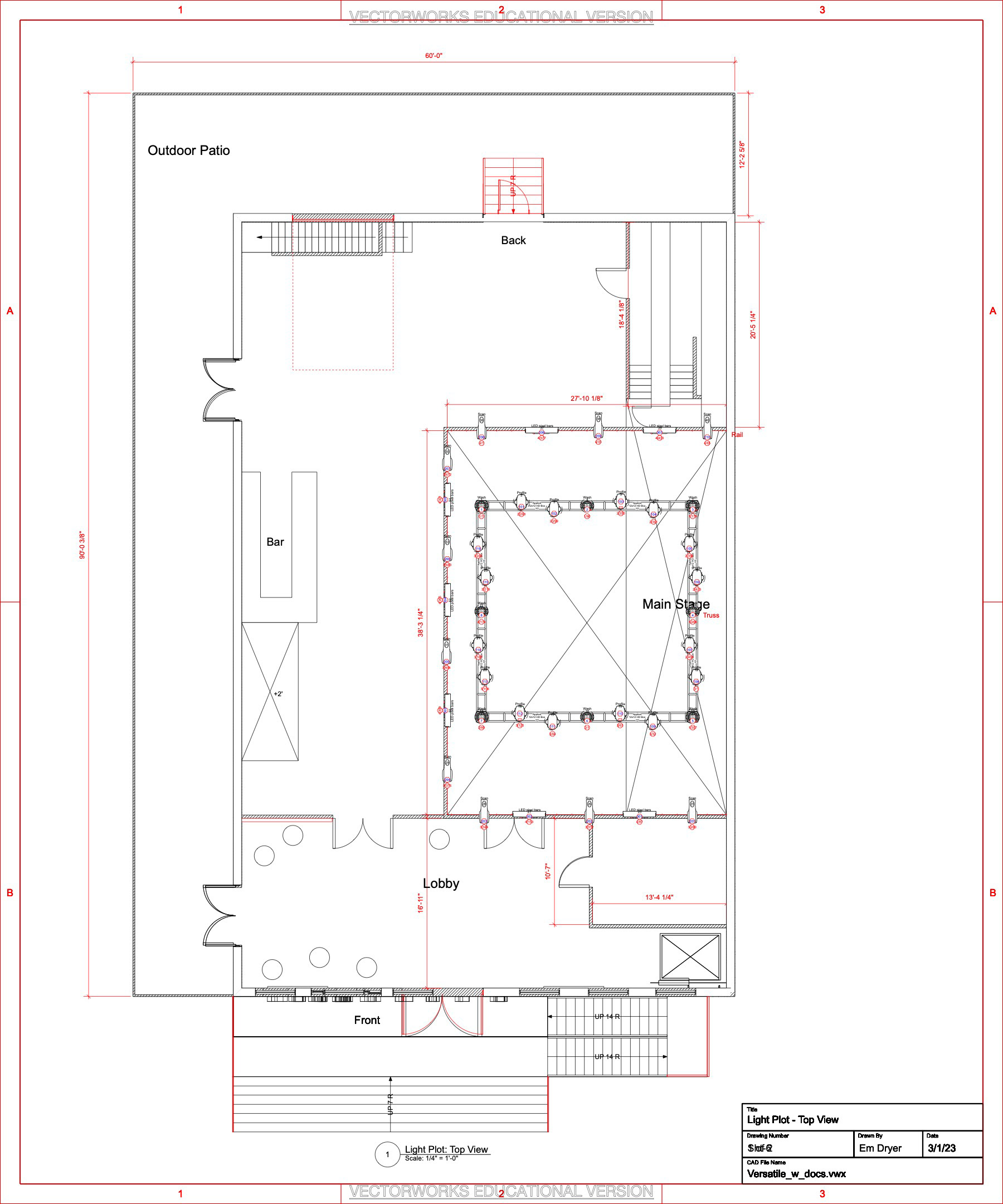
Top View Light Plot
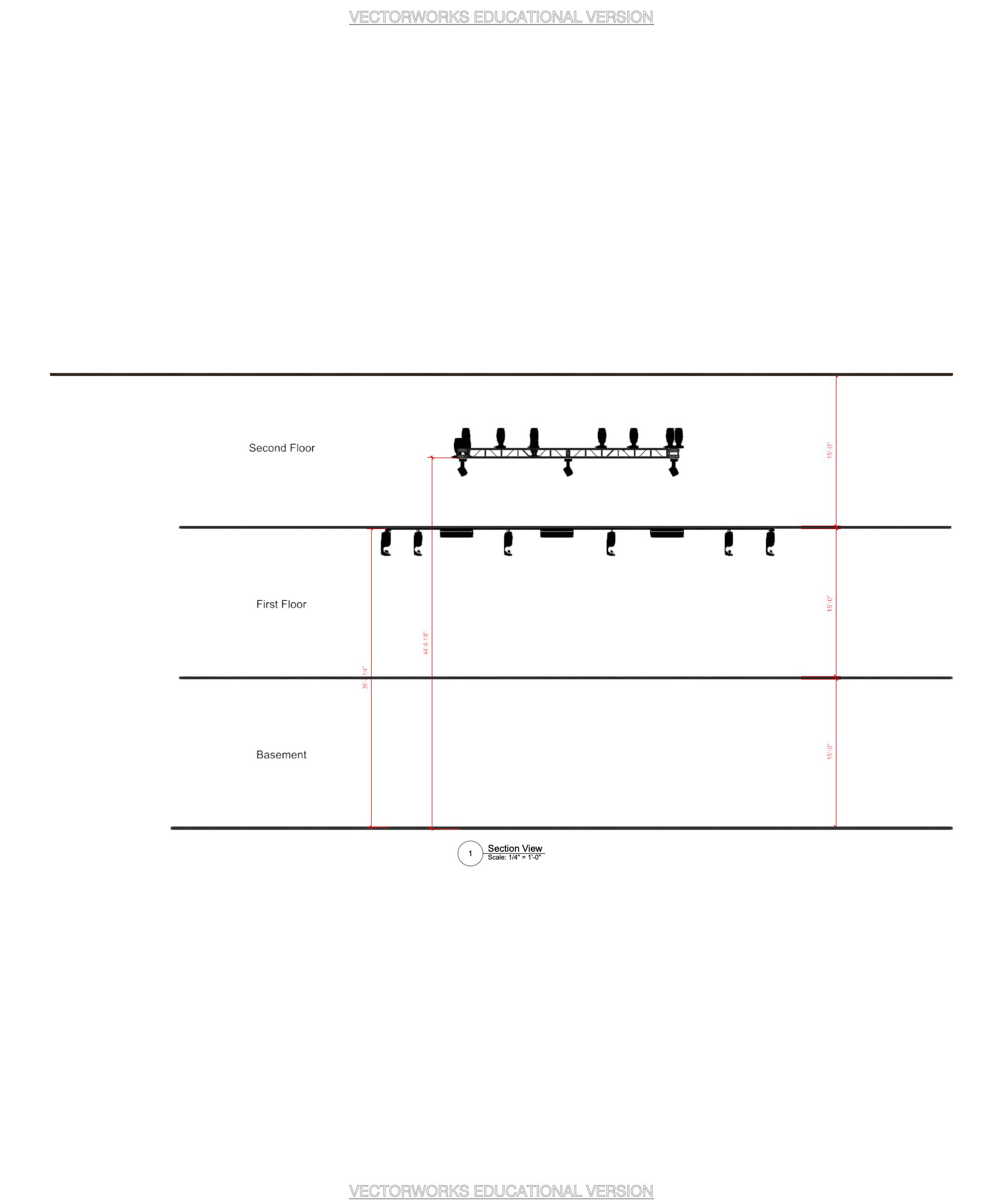
Section View Plot
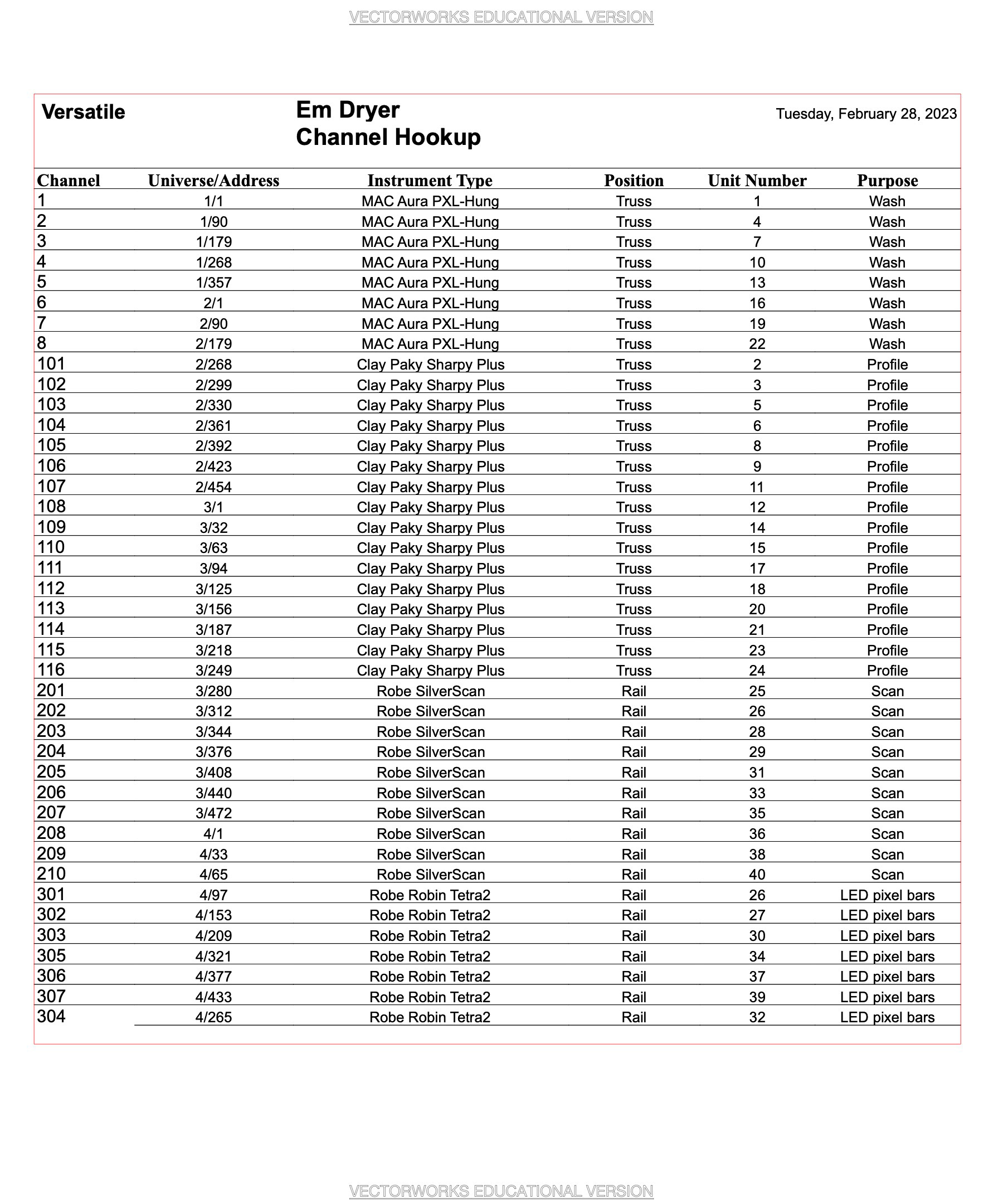

Intro + Background
In the Fall 2022 semester, I had the opportunity to fully design and 3D model a nightclub/music venue in 3D Previsualization for Live Entertainment, an AET class taught by Matt Smith. Along with the scale 3D model, deliverables included detailed annotated floorplans with dimensions and a branding package. The full documentation for this project is linked here.
Now, in the Spring of 2023, I am enrolled in AET Studio and have the opportunity to propose my own project. As a current lighting designer and programmer looking to find a career in Project Management, I was interested in creating a custom lighting package for the venue I had previously designed. I want to approach this from a project manager's perspective, so I want to create professional, industry-standard documentation that could be used if this were a real-world project. Further, I want to create a snazzy video showcasing the venue and lights with a crazy light show that I could program. I love to program lighting for EDM, which fits perfectly with the branding package which accompanies the venue.
The class is split into 2 modules, and students are given the opportunity to do 2 separate projects or to work on one larger project split into two distinct phases of production. I think that this project will take both, as I need to spend significant time learning and researching industry-standard documentation and compiling my assets before I can begin programming the light show, which will also take significant time.
Research:
First, I wanted to make sure that Capture would be a useful, industry-standard skill to learn. We use it here in the PLAI program, and I have personally seen it being used by professional lighting designers in both corporate and commercial settings. As part of my research, I found this link that lists both Vectorworks and Capture as industry-standard design tools.
To inform the design of my lighting plot, I found this excellent resource with a plethora of inspiration for my own plot. It is a list of 31 different professional lighting plots across a wide range of shows. My personal favorite was David Finn’s design for The Chicks’ 2022 revival tour. These documents are great examples of the type of documentation I hope to accomplish with my own creative challenge. The articles accompanied by each plot also feature interviews with the LDs who designed them, so there is a lot of rich information including what inspired their design, the creative limitations they had, and why they chose the fixtures they did. Similarly, I also found this article that discusses how a designer planned his rig for Kid Cudi’s 2022 world tour. The designer used all Ayrton fixtures and explains some of his decision-making processes.
Next, I wanted to find a resource that contains some of the basics of stage lighting. I feel as though I have a pretty solid understanding of these topics but wanted to find a resource that I could use as a reference and help anyone reviewing my work understand the basic vocabulary and concepts of lighting design, as it tends to be very different from other AET concentrations. I found this article from Sweetwater that works great for this. I also found a second article in this series reviewing DMX controls, a very technical topic that will be particularly relevant in Module 1. Finally, I found a glossary-style resource designed specifically for people who aren’t specialized in lighting vocabulary, linked here.
Through the process of researching, I found other articles and resources that I wasn’t looking for but was happy to find. For example, I found this video explaining how to automatically sync lights for live music performances. It isn’t the method I plan on utilizing, but it is always good to have a plan B (and C, D, E… etc). I also found this playlist on youtube which features designs made entirely on Capture software. These videos are a huge inspiration and showcase exactly what I am trying to do. There are several examples that cover a variety of music genres, including an EDM mix.
I also found some articles discussing how to design lighting for nightclubs in particular. This article emphasizes safety and this one outlines other regulations.
From a sociological and interpersonal perspective, I am also interested in research that explores the cultural significance of nightclubs, raves, and other dance spaces - particularly for marginalized audiences. To inform my research on this, I have been reading Dance Music Spaces by Danielle Antoinette Hidalgo. The book covers how different DJs and clubs have been negotiating the balance of commercialism and authenticity in a capitalist world. This is helping me understand how certain business elements may impact the audiences’ experience as well as the sustainability of the venue. It is also informing me of what certain audiences are seeking to experience when going out to a dance music space. From what I have read so far (2 of 4 chapters) audiences are looking for a transformative experience where they can live in a fantasy space for the evening, escape the stressors and mundane, and connect with others and their body through communal rhythmic movement. The book mentions how lighting can facilitate this by separating the space from reality through visual reinforcement, something I am hoping to explore with this project.
For the music, I have found two options. One is an EDM track called “Hidden” by Alex Productions. It is licensed as CC By-NC 4.0, which means I can share and build upon the property as long as it is not used for commercial gain and I properly attribute the creator. If further licensing is required, I can also buy the rights for 19 euros (converts to just above $20) under a PRO license. This option is less representative of traditional techno but has a lot of interesting variations which would lend well to a dynamic light show. I also found a song from a Berlin local that is much more evocative of German techno called PS150 (M4KIA Grayscale Rmx CC by SA). This is protected under a CC By-SA 4.0 International license, which means that I could use and remix the property as long as I attribute it to the creator and protect it under the same license. I am not as interested in this track in particular, as it has some clips of sermons embedded into the track which might not be appreciated by the venue’s target audience. In my research, I realized that this was specific to this particular remix. The original track has the same techno sound without any religious voiceovers and is protected under the same CC license as the remix.
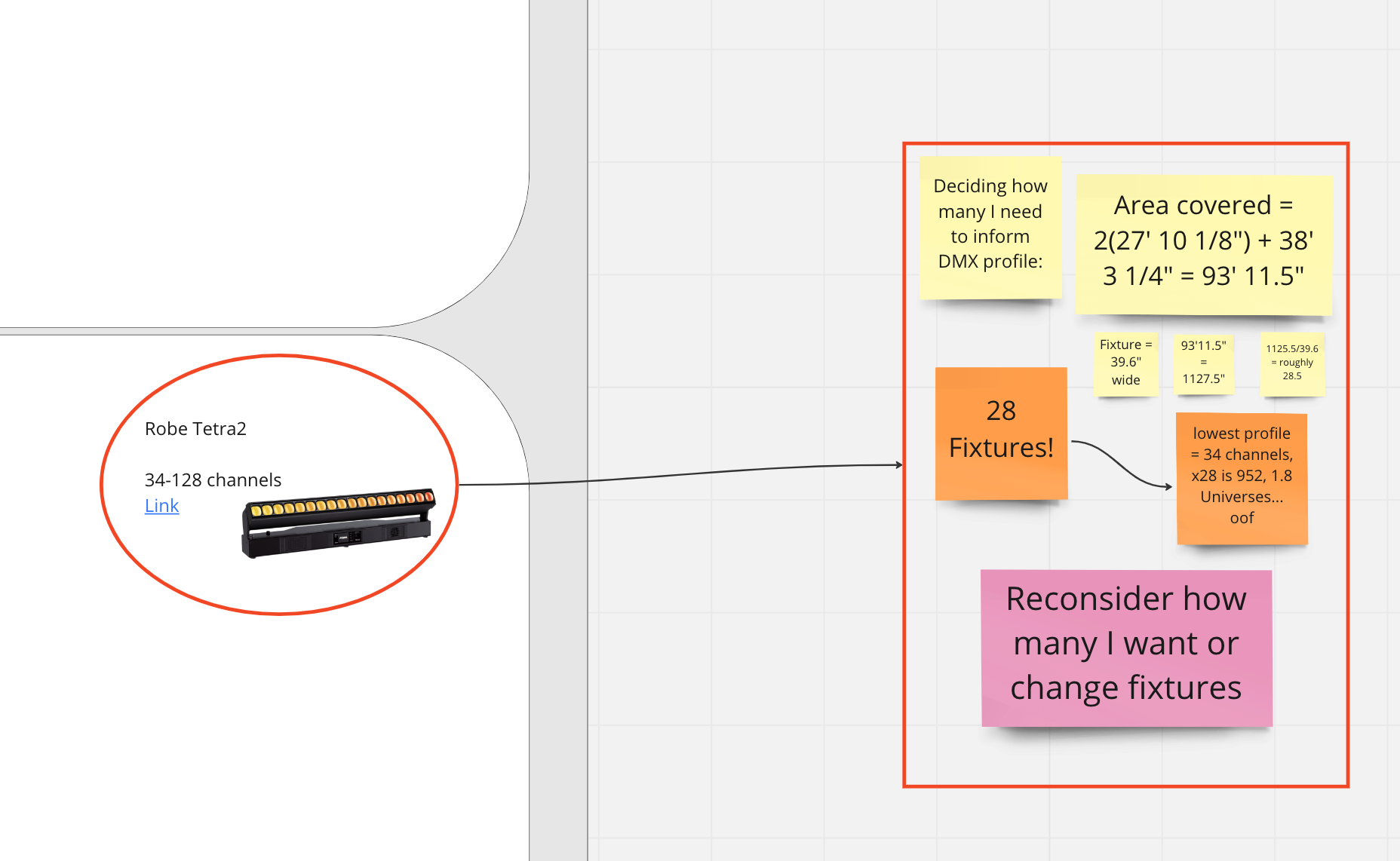
Calculating how many Tetra2 fixtures I would need to cover the rail
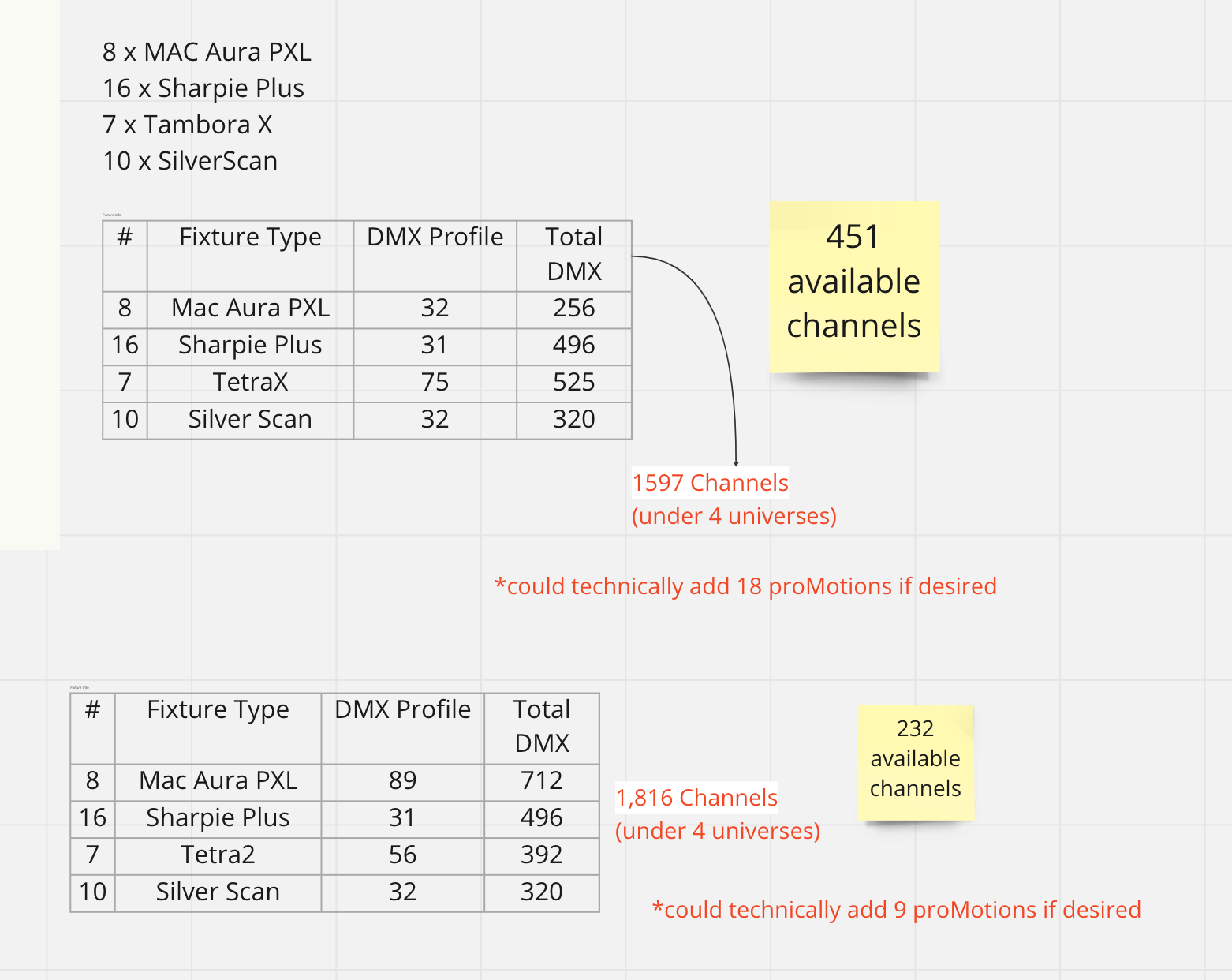
Calculating available DMX channels
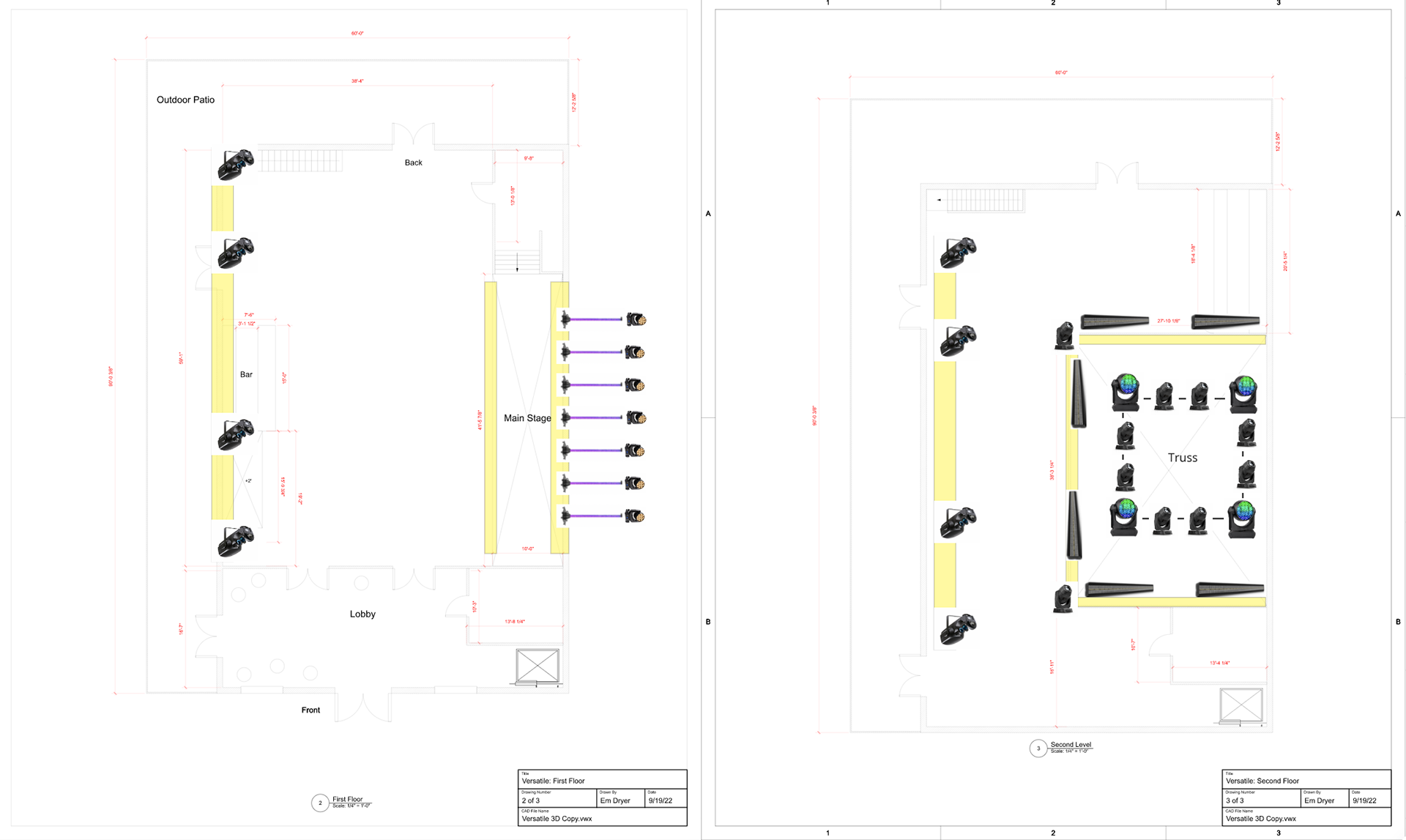
Drafting ideas for fixture placement in Miro; not to scale
Technology/Training/Tools:
A lot of specific software will be required, and they all connect in specific ways. I have included a chart below which outlines the required software and its connections.
Because there is only 1 software that I am unfamiliar with, I believe the only specific training I will need is for Capture. Fortunately, it is very well-documented and they also have tutorials through the Capture Learning video series. The rest of my pre-production work will be continuing research to inform my design choices. I also have access to all of this software thanks to generous educational licenses.
I have access to Vectorworks, Capture, and Reaper on my Mac. Therefore, most of the work I am doing in Module 1 can be done on my personal laptop. I do not, however, have the ability to use Hog4PC on my computer, so I will be relying on the PLAI lab to do the programming work in Module 2. While this is definitely a challenge, I have been utilizing this workflow for my entire career so far so I am very used to it and do not see it becoming an issue in the future. While I cannot necessarily apply feedback in real-time during class, I can get in the habit of taking progress videos using screen recordings to convey my progress in class. If I want to print out a large-scale light plot (which is done in the industry) I would need to access a large-format printer to do so.

